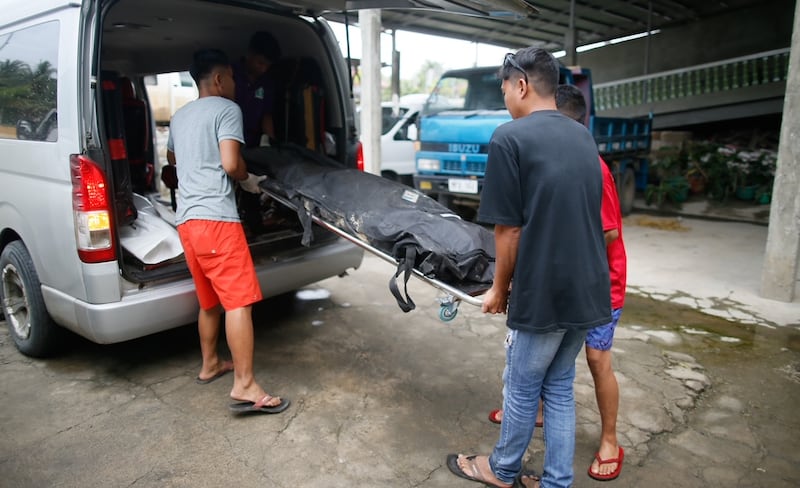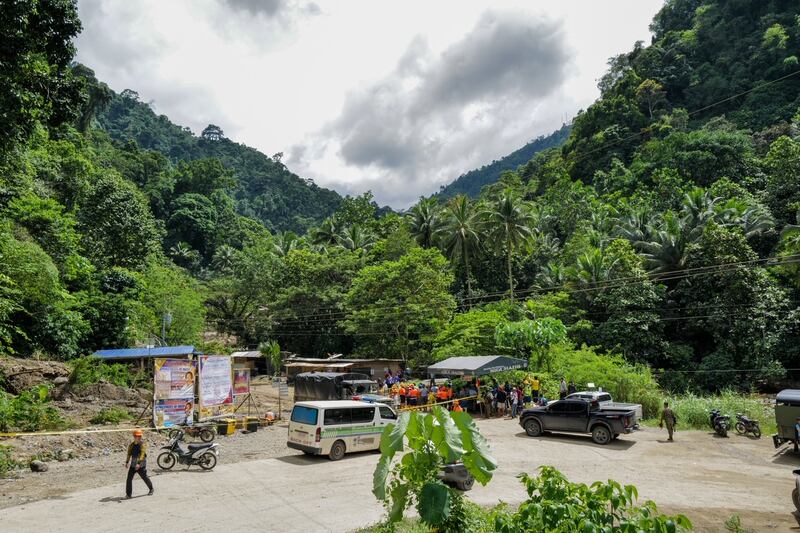UPDATED at 11:05 a.m. ET on 2024-02-07
Rescuers were digging through mud and debris on Wednesday to reach survivors of a landslide that killed at least six people in the southern Philippines following heavy downpours, authorities said.
The landslide occurred early evening Tuesday in a mountainous part of Davao de Oro province on Mindanao island, burying at least two buses used to transport mine workers, disaster officials said. Witnesses and nearby residents told rescuers that the deluge of mud also smothered a passenger jeepney and several homes.
The buses were waiting to pick up miners outside a gold mine owned by Apex Mining near the village of Masara, the Philippine company said in a statement.
Six bodies so far had been pulled from the mud, with 31 people injured and another 46 reported as missing, the disaster and rescue office of Maco municipality said in a statement Wednesday afternoon.

A total of 85 Apex Mining employees were initially thought to be trapped under the mud, said Col. Rosa Maria Cristina Rosete-Manuel, spokeswoman for the Army’s Eastern Mindanao Command.
However, there were reports of “unaccounted for individuals believed to be affected by the landslide,” she said, adding some 600 family members of the miners had been evacuated to a safer location.
Soldiers have been deployed to help local rescue efforts, which have been hampered by poor road access and mobile phone signal, she added.
An earthquake shook the village shortly after the landslide, provincial disaster official Edward Macapili told AFP news agency. The search effort was halted at midnight because it was too hazardous to continue, but resumed at daylight, he said.

The Philippines is one of the most disaster-prone countries in the world, located along the Pacific ring of fire, where tectonic plates collide, and in the Pacific typhoon belt.
A combination of mountainous terrain and high rainfall also makes the archipelago particularly susceptible to landslides.
In September 2018, more than 70 people in the mining town of Itogon in the northern Philippines died in a mudslide caused by Typhoon Mangkhut.
The worst landslide in Philippine history occurred on Feb. 17, 2006, following a 10-day downpour in the province of Southern Leyte. It buried the entire community of Guinsaugon village there, killing more than 1,000 people.
This report has been updated to include more photos from the scene of the landslide in Davao de Oro province.
